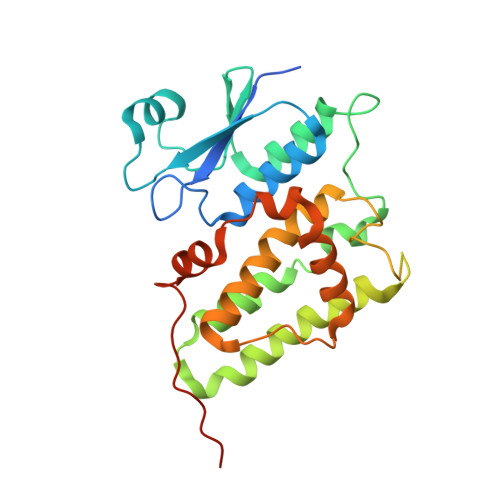Crystal structure of the soluble form of the redox-regulated chloride ion channel protein CLIC4.
Littler, D.R., Assaad, N.N., Harrop, S.J., Brown, L.J., Pankhurst, G.J., Luciani, P., Aguilar, M.-I., Mazzanti, M., Berryman, M.A., Breit, S.N., Curmi, P.M.G.(2005) FEBS J 272: 4996-5007
- PubMed: 16176272
- DOI: https://doi.org/10.1111/j.1742-4658.2005.04909.x
- Primary Citation of Related Structures:
2AHE - PubMed Abstract:
The structure of CLIC4, a member of the CLIC family of putative intracellular chloride ion channel proteins, has been determined at 1.8 Angstroms resolution by X-ray crystallography. The protein is monomeric and it is structurally similar to CLIC1, belonging to the GST fold class. Differences between the structures of CLIC1 and CLIC4 are localized to helix 2 in the glutaredoxin-like N-terminal domain, which has previously been shown to undergo a dramatic structural change in CLIC1 upon oxidation. The structural differences in this region correlate with the sequence differences, where the CLIC1 sequence appears to be atypical of the family. Purified, recombinant, wild-type CLIC4 is shown to bind to artificial lipid bilayers, induce a chloride efflux current when associated with artificial liposomes and produce an ion channel in artificial bilayers with a conductance of 30 pS. Membrane binding is enhanced by oxidation of CLIC4 while no channels were observed via tip-dip electrophysiology in the presence of a reducing agent. Thus, recombinant CLIC4 appears to be able to form a redox-regulated ion channel in the absence of any partner proteins.
Organizational Affiliation:
School of Physics, University of New South Wales, Sydney, Australia.














